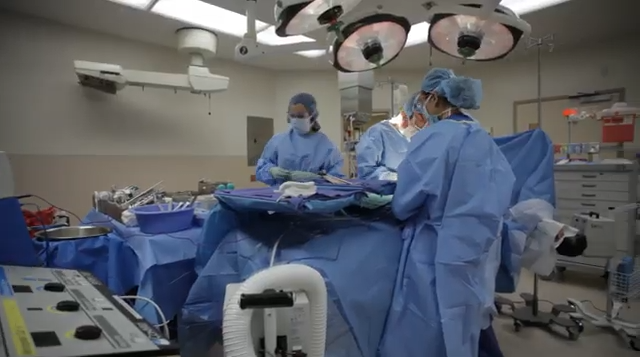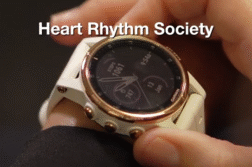JACKSONVILLE, Fla. (Ivanhoe Newswire) – Your heart has four valves, which keep your blood flowing in the right direction. If one doesn’t work correctly, it can put you at higher risk for stroke or congestive heart failure. More than 182,000 people have a faulty valve replaced each year. But what if your replacement needs to be replaced? The surgery can be risky — even life-threatening. That’s why a new, less invasive technique is repairing, not replacing leaky valves.
Life’s a day at the beach for Sidney Baer and his wife Michelle now, but the last few years have felt more like a hurricane.
“I had a sudden death cardiac arrest. Thankfully, my wife was around the corner and was able to give me CPR,” Sidney recalls.
Baer had a quadruple bypass followed by more open-heart surgery to plug a leaky mitral valve.
Baptist Health interventional cardiologist, Siddharth Wayangankar, MD explains, “Every time the heart tries to pump the blood out of the heart into the big aorta, almost 30 to 40% of it is actually leaking through that valve.”
That’s when Baer was faced with a third open heart surgery but repeat valve replacements can be risky.
“Basically, we were looking for something to avoid a third surgery, which to be honest with you, very few surgeons in the world would even consider it,” Dr. Siddharth mentions.
Dr. Siddharth, usually referred to as Dr. Sidd, decided to repair — not replace – Baer’s valve. He used an innovative technique called PVL closure to place a catheter in a small vein in the patient’s leg to deliver a plug that repairs the prior valve. Leaky valves
Dr. Sidd further says, “We have to think out of the box, use out of the box tools to close them. It’s always good to have a plan A, plan B, plan C.”
The first two plugs didn’t work, so it was on to plan c.
“Finally, I had to use a bigger device that’s used in a little bit of a bigger kids to close the defect. And that worked great,” Dr. Sidd further explains.
And thanks to Dr. Sidd, Sidney is getting stronger, and soaking up all that life has to offer.
“It’s a miracle that he’s alive,” chimes in Sidney’s wife, Michelle.
Compared to a traditional PVL replacement surgery, the repair means less recovery time, lower risk of infection, a shorter hospital stay, and smaller incisions and scars. Leaky valves
Contributors to this news report include: Marsha Lewis, Producer; Roque Correa, Videographer & Editor.
To receive a free weekly e-mail on medical breakthroughs from Ivanhoe, sign up at: http://www.ivanhoe.com/ftk
Sources:
https://idataresearch.com/over-182000-heart-valve-replacements-per-year-in-the-united-states/
MEDICAL BREAKTHROUGHS
RESEARCH SUMMARY
TOPIC: DR. SIDD SAVES SIDNEY: REPAIR, DON’T REPLACE LEAKY VALVES
REPORT: MB #5169
BACKGROUND: There are over 182,000 heart valve replacements every year. These are one of the most common cardiac surgeries and account for a quarter of the number that take place. The most common way to treat a heart valve problem or existing condition is through replacement valves. These surgeries are done using either existing tissue or mechanical heart valves. Surgeons’ preferences and performances are leaning more towards minimally invasive surgeries as opposed to traditional surgeries. The number of heart valve replacements is predicted to reach 240,000 within the next three years.
(Source:
https://idataresearch.com/over-182000-heart-valve-replacements-per-year-in-the-united-states/
DIAGNOSING: Artificial heart valves become useful as a substitution for dead valves in the human heart. The main test used to diagnose and detect a heart valve issue is called an echocardiogram, or ECHO for short. There may be done when the diagnosis is predicted to be more severe. An Electrocardiogram (EKG) is another test used to detect heart valve problems. The test measures the electrical activity of one’s heart using electrical waves. An EKG looks for signs or irregular heartbeats, signs of heart attacks, and the enlargement of heart chambers. These are all indications of heart valve issues. An echocardiogram is a test that uses sound waves to take a moving picture of your heart while it beats.
(Source:
https://journals.physiology.org/doi/abs/10.1152/jappl.1959.14.3.475?journalCode=jappl
https://www.healthinaging.org/a-z-topic/heart-valve-problems/tests
NEW TECHNOLOGY: Interventional cardiologist Siddharth Wayangankar MD was one of the first to perform a new high-risk procedure for heart valve replacement. It was the first procedure for someone with two previous open-heart surgeries and another one to fix a mitral valve. The procedures need a high level of planning, many specialists, and a collaborative effort of planning around the surgeries.
(Source:
FOR MORE INFORMATION ON THIS REPORT, PLEASE CONTACT:
Wesley Roberts
(704) 473-9750
If this story or any other Ivanhoe story has impacted your life or prompted you or someone you know to seek or change treatments, please let us know by contacting Marjorie Bekaert Thomas at mthomas@ivanhoe.com





